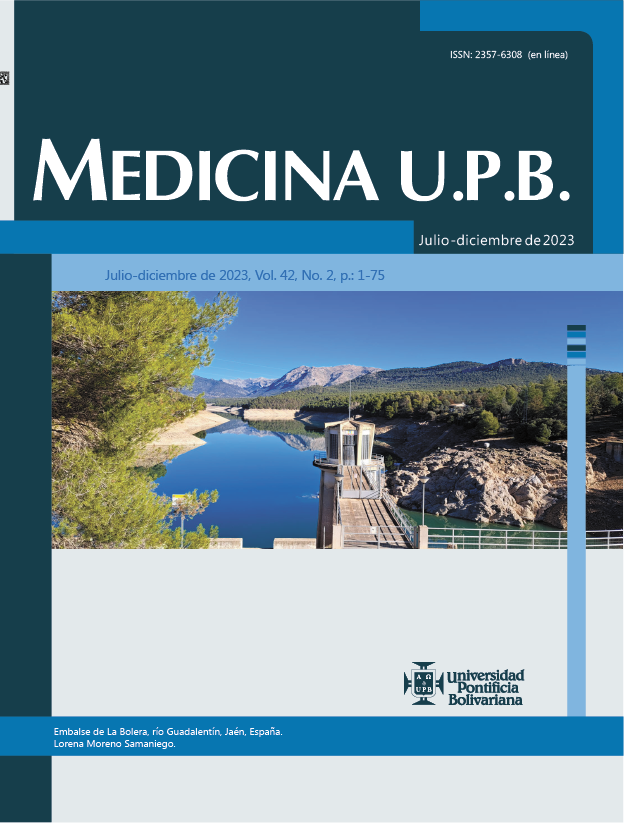Síndrome de vasoconstricción cerebral reversible asociado a lesión miocárdica: un reporte de caso.
Contenido principal del artículo
Resumen
El síndrome de vasoconstricción cerebral reversible es poco frecuente y su fisiopatología aún no está bien dilucidada. Su presentación clínica se caracteriza por manifestaciones neurológicas como cefalea “en trueno”, déficit focal, vómito, fotofobia y, en casos graves, puede tener complicaciones como eventos cerebrovasculares isquémicos o hemorrágicos. El diagnóstico se realiza mediante angiografía cerebral, angiotomografía o angioresonancia, las cuales documentan vasoconstricción de las arterias cerebrales con resolución espontánea, que en la mayoría de los casos es consistente con un buen pronóstico clínico. A continuación, se expone el caso de una paciente con vasoconstricción cerebral reversible y lesión miocárdica asociada, en donde se logra un diagnóstico mediante imágenes y tratamiento oportuno. La importancia del caso radica en informar sobre el reconocimiento temprano de una complicación miocárdica poco común del síndrome de vasoconstricción cerebral, pero con riesgo de morbimortalidad dentro del espectro de los cuadros cerebrovasculares.
Referencias
Arrigan MT, Heran MKS, Shewchuk JR. Reversible cerebral vasoconstriction syndrome: An important and common cause of thunderclap and recurrent headaches. Clin Radiol. 2018;73(5):417-27.
Calabrese LH, Dodick DW, Schwedt TJ, Singhal AB. Narrative review: Reversible cerebral vasoconstriction syndromes. Ann Intern Med. 2007;146(1):34-44.
Hammad TA, Hajj-Ali RA. Primary angiitis of the central nervous system and reversible cerebral vasoconstriction syndrome. Curr Atheroscler Rep. 2013;15(8):346.
Miller TR, Shivashankar R, Mossa-Basha M, Gandhi D. Reversible cerebral vasoconstriction syndrome, Part 1: Epidemiology, pathogenesis, and clinical course. Am J Neuroradiol. 2015;36(8):1392-9.
Singhal AB, Hajj-Ali RA, Topcuoglu MA, Fok J, Bena J, Yang D, Calabrese LH. Reversible cerebral vasoconstriction syndromes: Analysis of 139 cases. Arch Neurol. 2011;68(8):1005-12.
Call GK, Fleming MC, Sealfon S, Levine H, Kistler JP, Fisher CM. Reversible cerebral segmental vasoconstriction. Stroke. 1988;19(9):1159-70.
Burton TM, Bushnell CD. Reversible cerebral vasoconstriction syndrome. Stroke. 2019;50(8):2253-8.
de Boysson H, Parienti JJ, Mawet J, Arquizan C, Boulouis G, Burcin C, et al. Primary angiitis of the CNS and reversible cerebral vasoconstriction syndrome: A comparative study. Neurology. 2018;91(16):e1468-78.
Ducros A, Bousser MG. Reversible cerebral vasoconstriction syndrome. Pract Neurol. 2009;9(5):256-67.
Singhal AB, Bernstein RA. Postpartum angiopathy and other cerebral vasoconstriction syndromes. Neurocrit Care. 2005;3(1):91-7.
Chen SP, Chung YT, Liu TY, Wang YF, Fuh JL, Wang SJ. Oxidative stress and increased formation of vasoconstricting F2-isoprostanes in patients with reversible cerebral vasoconstriction syndrome. Free Radic Biol Med. 2013;61:243-8.
Marra A, Vargas M, Striano P, Del Guercio L, Buonanno P, Servillo G. Posterior reversible encephalopathy syndrome: The endothelial hypotheses. Med Hypotheses. 2014;82(5):619-22.
Chen SP, Fuh JL, Wang SJ, Tsai SJ, Hong CJ, Yang AC. Brain-derived neurotrophic factor gene Val66Met polymorphism modulates reversible cerebral vasoconstriction syndromes. Plos One. 2011;6(3):e18024.
Cappelen-Smith C, Calic Z, Cordato D. Reversible cerebral vasoconstriction syndrome: Recognition and treatment. Curr Treat Options Neurol. 2017;19(6):21.
Spadaro A, Scott KR, Koyfman A, Long B. Reversible cerebral vasoconstriction syndrome: A narrative review for emergency clinicians. Am J Emerg Med. 2021;50:765-72.
Chen SP, Fuh JL, Wang SJ. Reversible cerebral vasoconstriction syndrome: Current and future perspectives. Expert Rev Neurother. 2011;11(9):1265-76.
Thygesen K, Alpert JS, Jaffe AS, Chaitman BR, Bax JJ, Morrow DA, et al; ESC Scientific Document Group. Fourth universal definition of myocardial infarction (2018). Eur Heart J. 2019;40(3):237-69.


